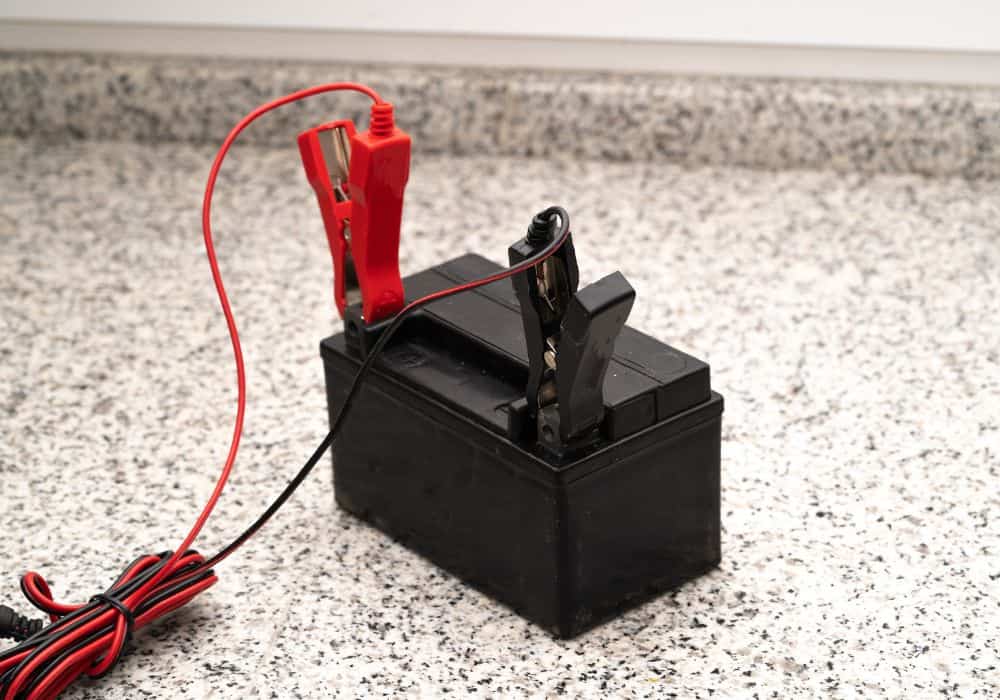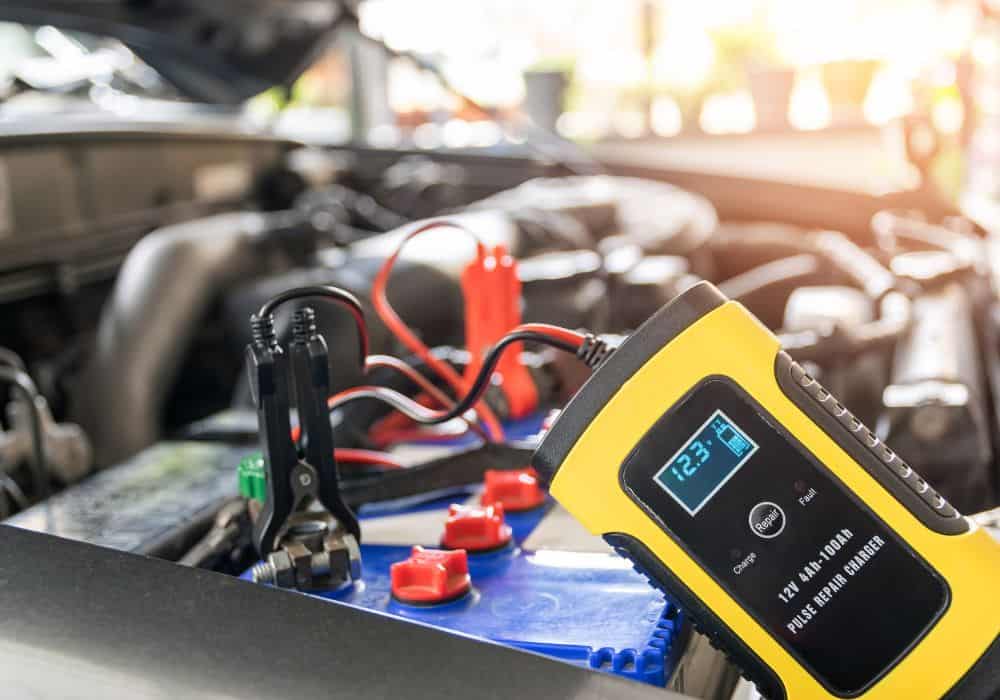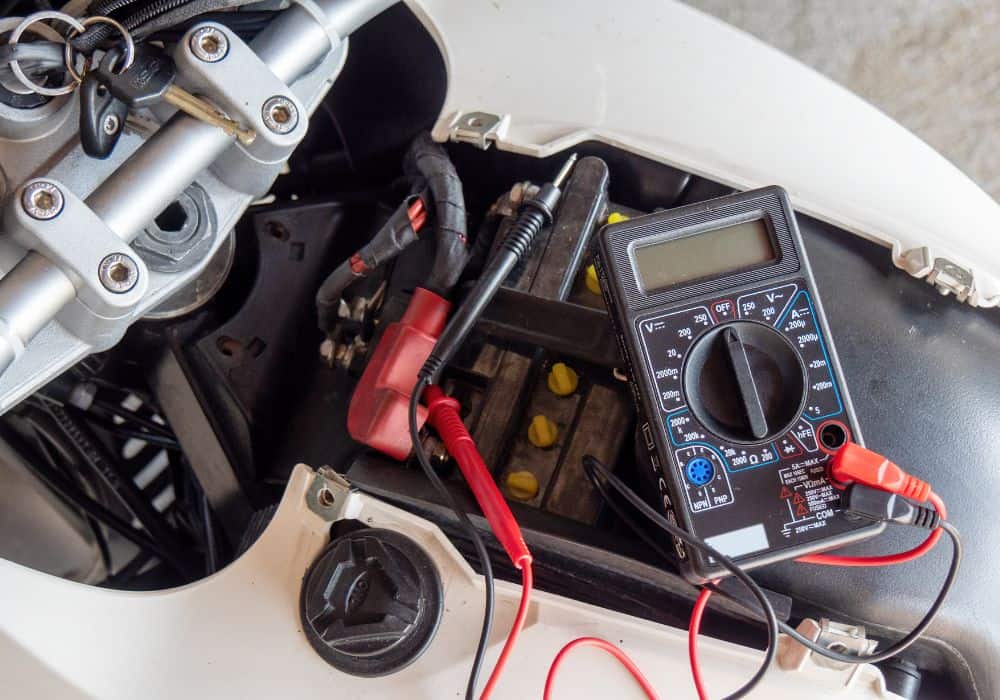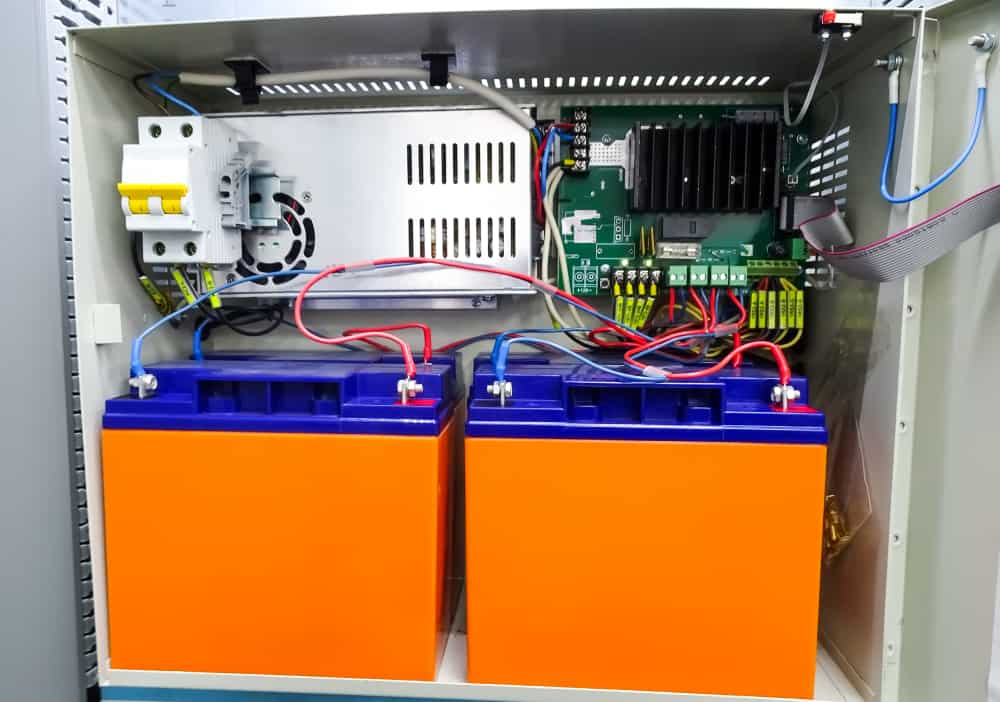Do you have a 24v battery that you want to charge? That’s all fine, except what if you only have a 12-volt charger? You may be wondering if you can actually charge that battery on that charger.
Good news! You’re in luck, because there are a few ways that you can charge your 24-volt battery with a 12-volt charger. In this blog post, we will explore the options that you have at your disposal. If you’re ready, then let’s get started!
Table of Contents
Can You Charge a 24-Volt Battery on a 12-Volt Charger?
Most people are familiar with the standard battery voltages of 12, 24, and 48. These voltages refer to the battery’s nominal voltage, or the voltage at which the battery is fully charged.
However, the actual voltage of a battery can vary depending on its charge state. For example, when a battery is completely discharged, its voltage will be lower than when it is fully charged.
So, if you have a 12-volt charger and a 24-volt battery, you can still charge the battery. The trick here is that you will just need to be aware of the voltage difference between the charger and the battery and act accordingly.
24-Volt Battery Basics

Before we get too deep into the subject, you will want to understand the unique nature of 24-volt batteries.
Oftentimes, 24-volt batteries are used in larger vehicles, such as buses, large trucks, and fishing boats that require a trolling motor. They are also often used in power tools, electric scooters, large boats, and in RVs to help manage solar power.
Most 24-volt batteries are lead-acid batteries. There are a few different kinds of lead-acid batteries, including AGM, gel, and flooded batteries.
Lead-acid batteries have a higher voltage when they are first charged. As we mentioned earlier, a battery’s voltage will drop as the battery discharges, and when the battery is fully discharged, its voltage will be lower than the nominal voltage. Also, it’s important to never overcharge these batteries, as that will damage them.
As you can imagine, lead-acid batteries use lead-acid battery chargers because of their unique qualities. These chargers actually have a feature built into their design that prohibits the battery from being overcharged.
Any old household charger won’t perform in the way that supports a lead-acid battery, so if you’re not careful, you’ll actually damage your 24-volt battery on anything less than a 24-volt charger.
How to Charge a 24-Volt Battery on a 12-Volt Charger?
In other words, it goes without saying that in a straight exchange, 12 volts is not enough to charge a 24-volt battery.
But we did say that it’s possible. To do so, you will need a few workarounds to make it happen. Here is what can be done.

Method 1: Use a 12-Volt Trickle Charger
If you must use a 12-volt charger, one of the best ways to do so is with a trickle charger.
Trickle chargers are a special kind of charger that are designed to charge lead-acid batteries in a slow and steady manner over time. They work well for batteries that you don’t use all the time but want to keep charged at any given moment, such as a car battery. They don’t let lead-acid batteries get too discharged either, which is something that could damage their battery life.
Plus, trickle chargers are a perfect solution for those who don’t want to or can’t babysit their battery as it charges.
So, there are some tips need to be mindful if you are going this route to charge your 24-volt battery:
- The current on the trickle charger is not too high.
- Keep in mind that an appropriate level of current (measured in milliamps, mA) is about one-tenth the capacity of the battery you are about to charge.
- The minimum charging current for AGM and gel batteries should be within the range of 15-20% of its capacity.
- If you use a 12-volt trickle charger on a 24-volt battery, then you will want to break the circuit so that you are only charging a total of 12 volts at a time.
Method 2: Use a 12-Volt Alternator
If you have a 12-volt alternator, then that is another good option you can use to charge your 24-volt battery.
But how does that work, exactly?
An alternator is a device that uses the power of an engine to generate electricity to send through the entire electrical system. This electricity then charges the battery.
By using a voltage regulator, a 12-volt alternator can charge a 24-volt system. This works because the voltage regulator controls the input voltage and the voltage output, maintaining a safe level of electrical current so that it doesn’t overload the system and damage the battery.
More specifically, if your 24-volts come in the form of a battery bank (or called a system) of 12-volt batteries, then you can just go ahead and use the 12-volt alternator. However, if it’s an actual 24-volt battery, as opposed to a system of batteries, then you will need to use a voltage converter before you can charge it with a 12-volt alternator.
Other Methods of Charging
There are a few other basic methods you can use to charge batteries. They include:
- Constant Voltage: In this method, you charge the battery at a constant voltage until it is fully charged. It is a DC power supply that uses a step-down transformer to charge a battery.
- Constant Current: This method charges the battery at a constant current. Once the battery is charged, the voltage will cut off.
- Pulsed Charge: This method is when you charge the battery in short pulses. Once the battery is charged, the current will stop.
- Taper Current: This is a method where you have constant voltage. There is increased voltage as the current decreases while the battery charges.
But just like the other charging methods we looked at, a 24-volt battery cannot be directly charged with a 12-volt battery charger. There must be a way to step up the 12-volt charger, such as a boost converter or one of the other methods mentioned here.
Frequently Asked Questions About 24-Volt Batteries or 12-Volt Chargers
Now that you know all about how to charge a 24-volt battery with a 12-volt charger, let’s look at a few frequently asked questions that people have about these kinds of batteries and chargers.

1. What is the difference between a parallel circuit of batteries and a series circuit of batteries?
In a parallel circuit, the batteries are all connected together in one big loop. The voltage stays the same, but the capacity (or amp hours) goes up.
In a series circuit, the batteries are all lined up end-to-end. The voltage goes up, but the capacity stays the same.
2. What is the difference between a deep cycle battery and a trolling motor battery?
A deep cycle battery is designed to be discharged and recharged repeatedly. A trolling motor battery is designed to provide power for a trolling motor over an extended period of time.
3. What is the difference between battery capacity, voltage, and terminals?
- Battery capacity: Refers to the amount of charge that a battery can store. The capacity of a battery is usually measured in milliamp hours (mAh), which indicates how many milliamps of current the battery can supply for how many hours. For example, a battery with a capacity of 1000 mAh could theoretically supply 1000 milliamps of current for one hour, 500 milliamps for two hours, or 250 milliamps for four hours.
- Battery voltage: Battery voltage(which is measured in volts, v) is the electric potential difference between the positive and negative terminals of a battery. In other words, it is the amount of force that battery can create to push electrons through a circuit. The higher the voltage, the more force there is.
- Battery terminals: They are the parts of the battery where electricity flows in and out. There are two types of battery terminals: positive terminals (typically marked with a “+” sign) and negative terminals (typically marked with a “-” sign), and they are used to connect the battery to the load, which can be anything from a light bulb to an electric motor. When the battery is connected to the load, electrons flow from the negative terminal to the positive terminal, providing power to the load.
In Conclusion
Now you know all about how to charge a 24-volt battery with a 12-volt charger. You also know that it’s not as simple as just connecting the two together. You need to use a voltage converter to step up the voltage of the 12-volt charger so that it can charge the 24-volt battery safely.
If you have any more questions about charging a 24-volt battery with a 12-volt charger, or if you have any tips to share, please leave a comment below!
